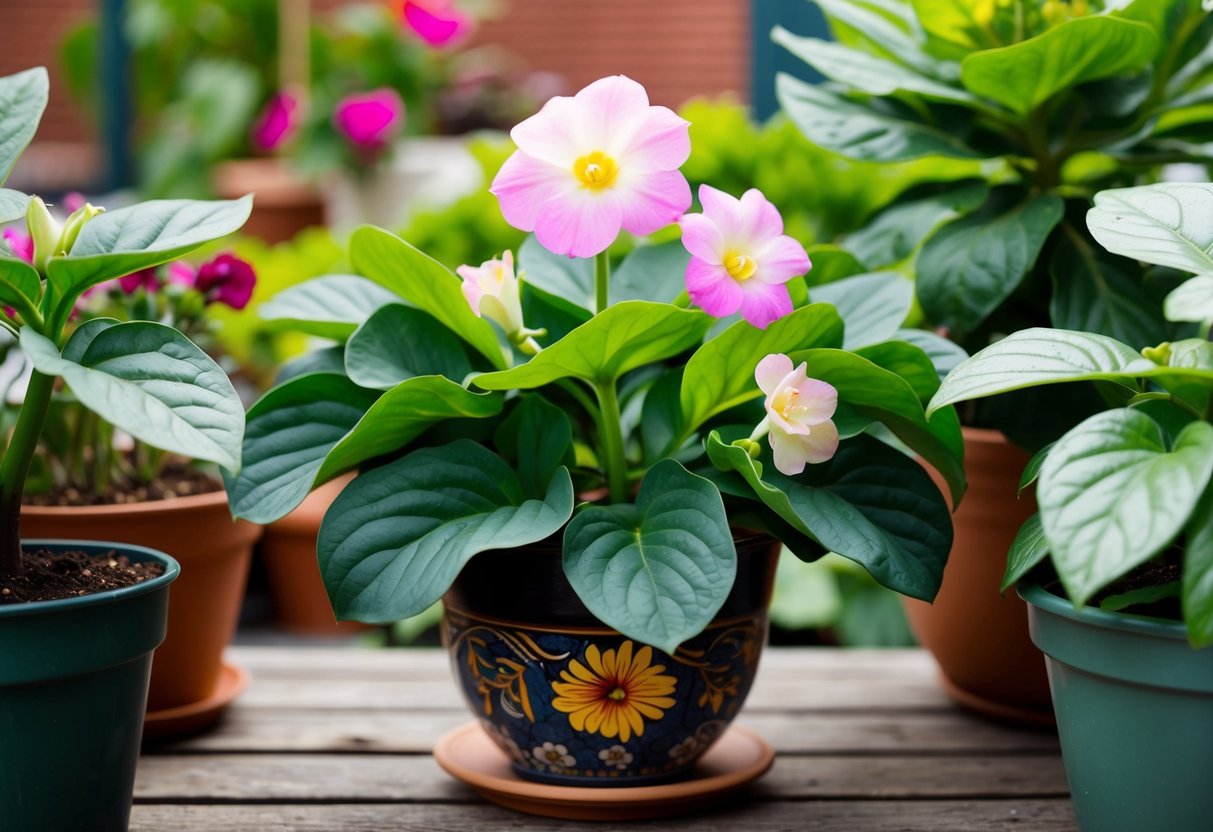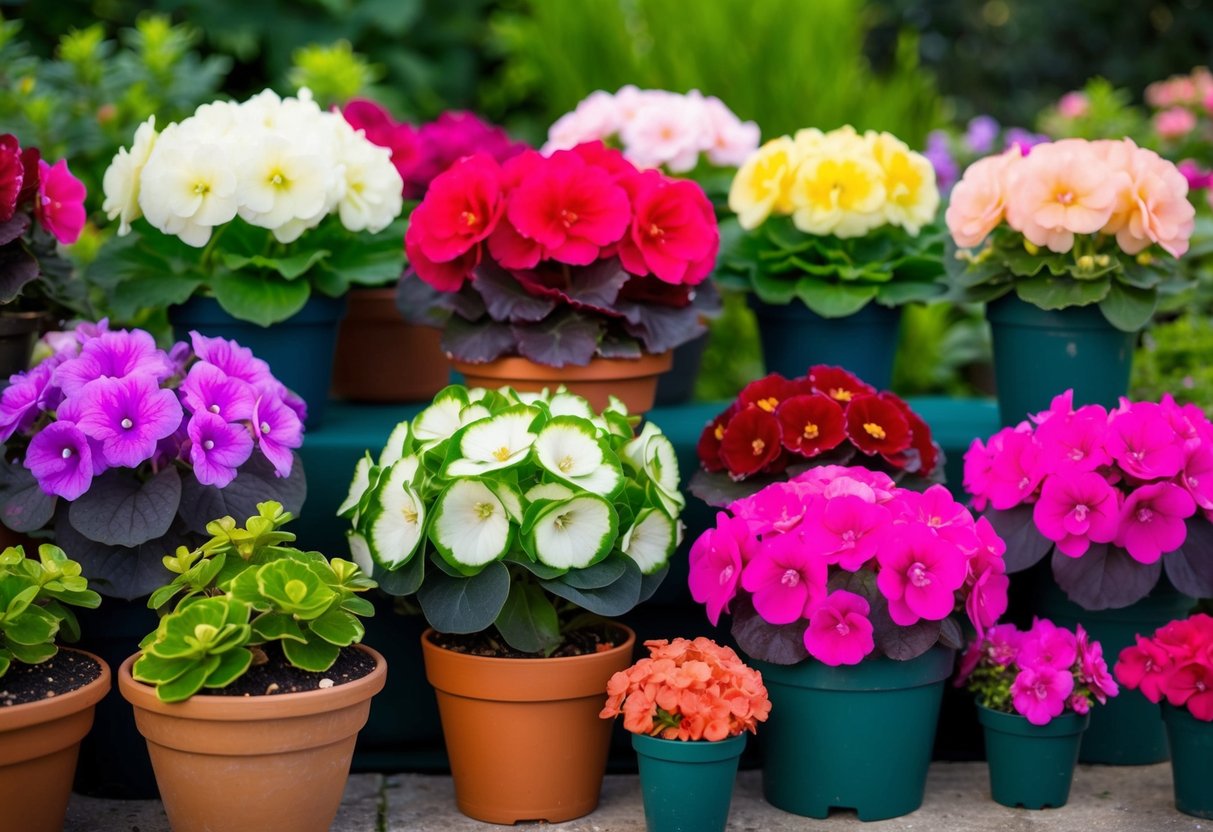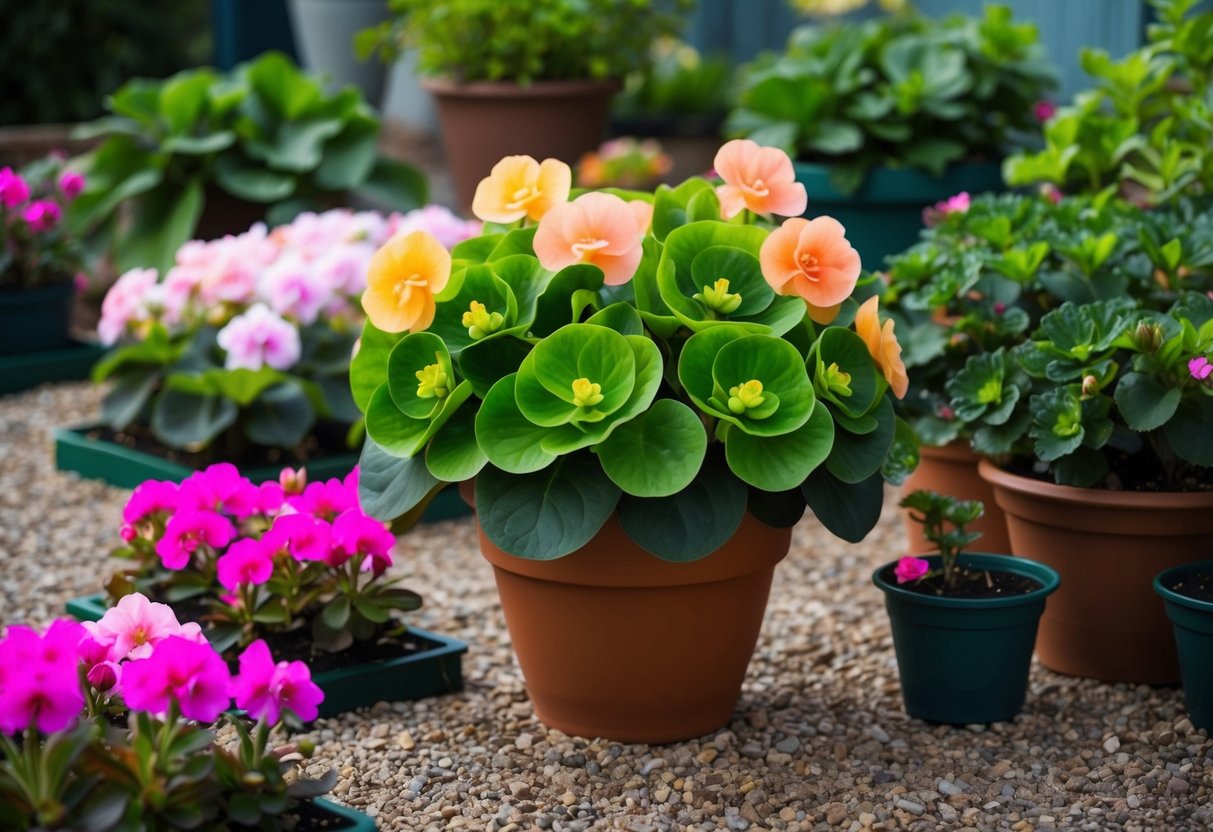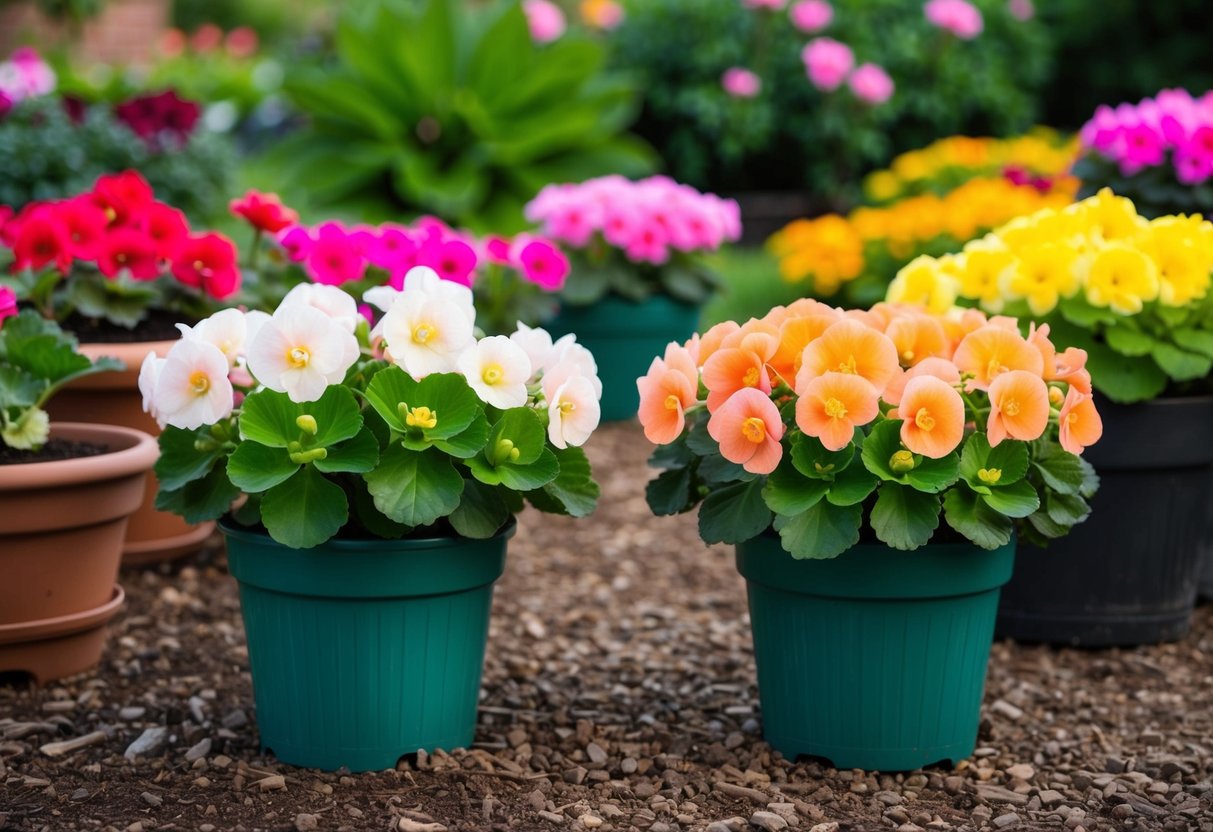Do Begonias Do Better in Pots or in the Ground? A Gardener’s Guide
Choosing whether to grow begonias in pots or directly in the ground depends on your specific gardening needs and environment. Begonias often do better in pots because they can be easily moved to optimize sunlight and protect them from harsh weather. This flexibility is particularly useful if you live in an area with unpredictable climate changes.

If you’re considering begonias as houseplants, pots are a great choice. They allow you to bring your plants indoors during colder months, ensuring they continue to thrive. As outdoor plants, you can easily arrange potted begonias on patios or balconies, giving your space a pop of color.
On the other hand, planting begonias in the ground might work well if you have a garden with consistent partial shade and well-draining soil. In this setup, begonias can spread naturally, creating beautiful garden displays. Remember to maintain healthy spacing to promote good growth whether you plant them in pots or in the ground.
Considering the Best Environment for Begonias

When choosing between pots and the ground for your begonias, consider factors like sunlight, space, and maintenance. Pots offer flexibility, helping to manage light exposure and water needs better, while growing in the ground can allow for more robust growth in suitable conditions.
Potting Benefits for Begonias
Growing begonias in pots can be a great choice for urban environments or limited spaces. By using pots, you can easily move your begonias to achieve the ideal light conditions. This is particularly useful if you live in a place where they might receive too much full sun. Begonias typically thrive in partial shade or semi-shade, and pots allow you to experiment with different locations around your home.
With pots, it’s easier to control the soil content. You can choose a high-quality, well-draining potting mix, which is crucial for these tropical plants. This type of mix prevents root rot and keeps your plants healthy. Potted begonias also make it simpler to bring them indoors during colder months, turning them into lovely indoor plants. Indoor placement can protect them from harsh weather and pests.
Advantages of Planting Begonias in the Ground
Planting begonias directly in the ground provides them with more space to spread their roots, potentially leading to fuller and more vibrant growth. If you have a garden with rich, well-drained soil, these outdoor begonias can flourish beautifully. In regions with warm climates, they enjoy being planted in a spot with partial or semi-shade to avoid scorching from the afternoon sun.
Ground-planted begonias require less frequent watering than those in pots since the soil can retain moisture better. This can be less labor-intensive if you have a larger garden. Moreover, when planted outdoors, begonias can better assimilate into a natural garden setting with other plants, enhancing your garden’s overall appearance. These plants also contribute positively to your garden’s biodiversity, attracting pollinators with their bright flowers.
Types of Begonias and Their Ideal Settings

Begonias come in various types, and each one has a specific environment where it thrives best. Some types are perfect for pots, making them ideal for indoor spaces or patios, while others do better planted directly in garden soil.
Varieties Suited for Pots
Wax begonias, with their glossy leaves, are perfect for pots. They enjoy bright indirect light, making them great for indoor setups too. Rex begonias are another amazing choice for containers. Their colorful, textured leaves add a pop of color to any room.
Fibrous-rooted begonias, like cane begonias, can also be potted. In small containers, they need frequent watering. These varieties often feature stunning foliage and unique flower shapes, adding variety to your potted plant collection. Regular watering and ensuring the pot has drainage can keep these plants healthy.
Tuberous begonias are ideal for hanging baskets or large containers. Their large, vibrant flowers can enhance any space. Keep pots in a spot with filtered sunlight to mimic their natural environment, helping them bloom beautifully.
Begonias That Thrive in Garden Soil
Certain begonias excel when planted in garden beds. Angel wing begonias are a type of cane begonia that can grow quite tall, offering striking foliage outdoors. They need space and should be planted in a spot with light shade to prevent leaf burn.
Rhizomatous begonias are another excellent choice for garden soil. They spread through underground stems and create lush ground cover. These are often used as perennials due to their ability to return each year.
Tuberous begonias can also thrive in garden beds. Make sure to provide them with rich, well-drained soil. Protecting them from direct sun helps keep their flowers vibrant and healthy. These types are often grown as annuals in regions with harsh winters.
Proper Care and Maintenance for Potted and Garden Begonias

When caring for begonias, whether in pots or in the ground, attention to watering, nutrition, pest control, and grooming makes a big difference. Keeping an eye on these can keep your begonias healthy and beautiful.
Watering and Drainage Needs
Begonias like their soil to be moist, but not soggy. Ensure your pots have drainage holes to let excess water escape, which helps prevent root rot. If planting in the ground, make sure the soil drains well.
When watering, stick to a regular schedule. Check the top inch of the soil; if it feels dry, it’s time to water. Morning is often the best time for watering because it gives leaves time to dry and helps prevent fungal diseases. Overwatering can lead to powdery mildew and other problems, so be cautious about not giving too much water.
Nutrition and Fertilization
Feeding your begonias properly boosts their growth and keeps them blooming. A balanced, water-soluble fertilizer is a good choice, applied every two to four weeks.
For potted begonias, apply less often during the winter months, as they grow slower. Garden begonias benefit from occasional soil enrichment with compost to keep nutrients replenished. Keep an eye on your plants for any signs of nutrient deficiency, like yellow leaves, and adjust your feeding schedule accordingly.
Managing Pests and Diseases
Pests like spider mites and mealybugs can be a problem for begonias. Regular checks are important to spot these pests early. You can wash them off with a strong spray of water, or use insecticidal soap if they persist.
Diseases like botrytis and powdery mildew are common, especially in humid conditions. Improve air circulation around your plants and remove any affected leaves. Using clean gardening tools helps prevent the spread of diseases.
Pruning and Grooming Techniques
Pruning helps your begonias stay healthy and encourages bushier growth. Trim back overgrown stems, but don’t remove more than a third of the plant at one time.
Deadheading, or removing spent flowers, keeps your plants looking tidy and promotes more blooms. Keep an eye out for damaged or dead leaves and remove them promptly. This not only improves the appearance but also reduces the risk of pests and diseases taking hold. Regular grooming helps maintain the plant’s shape and health.
Propagation and Growth of Begonias

Propagation and growth of begonias are key to cultivating these beautiful plants. From taking cuttings to choosing the right potting mix, you’ll learn crucial steps to ensure healthy growth.
From Cuttings to Mature Plants
Begonias are often propagated through stem cuttings. To begin, choose a healthy stem and cut a piece about 4-6 inches long. Remove the lower leaves to avoid rot.
Next, place the cutting in water or directly into soil, depending on your preference. To encourage root growth, keep the cutting in a warm, humid environment. This can be achieved by covering it with a plastic bag.
Within a few weeks, you should notice roots forming. Once the roots are about 1-2 inches long, consider planting begonias in their permanent pot or garden spot.
Be patient as the plant matures. With the right care, including sufficient light and moisture, your begonia will thrive and flourish into a lively plant.
Potting Mix and Soil Considerations
For begonias to grow successfully, selecting the appropriate potting mix is essential. A well-drained soil blend is ideal, preventing water from stagnating around the roots. This helps to avoid root rot, a common issue in overly wet conditions.
You can use a standard potting mix suitable for indoor plants, but ensure that it drains well. Mixing in some organic matter, like peat moss or perlite, can enhance soil quality. Begonias thrive in slightly acidic to neutral pH levels, so keep this in mind when choosing your soil type.
By offering your begonias a well-balanced environment, you’re setting the stage for them to grow healthily whether in pots or in the ground.
Seasonal Concerns and Overwintering

Begonias have unique needs when it comes to seasonal changes and surviving winter. Addressing these needs can help ensure healthy growth and survival through colder months.
Adjusting Care with the Seasons
As seasons change, begonias require different care. For tender perennials like begonias, it’s important to adjust watering and light exposure.
In spring and summer, keep the soil moist but not soggy. When temperatures rise, ensure the plants get bright, indirect sunlight. This helps them grow strong and full.
When fall arrives, it’s time to reduce watering to prevent root rot. Be cautious of dropping temperatures. When to plant begonias in warmer climates can differ, but waiting for frost-free days is a safe bet. Hardy begonias like begonia grandis are more resilient and can stay outside longer, but they still need some protection.
Overwintering Strategies for Begonia Survival
To start overwintering begonias successfully, you should identify your begonia type. For tuberous begonias, carefully dig them up and store them indoors. Snip the stems to about three or four inches and let them dry out before storing them in a cool, dark place.
Meanwhile, rhizomatous or wax begonias need to be placed in pots and brought indoors to a bright spot.
Hardy begonias can survive mild winters outside. Apply a layer of mulch to protect them from harsh frost.
Indoor begonias need bright, indirect light, and a cooler place to rest. Keep an eye on the temperature, ensuring it stays above 50°F to prevent damage.







